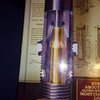Orcon
Member
I used the term "excessive headspace conditions" in the same manner as Walkalong's "artificial headspace". For most reloaders the term only relevant to the relationship of a sized case and the chamber. I reload for a rifle that I can close a no-go gauge on. No big deal, I simply size my brass down .003" under what a fired case is. Technically speaking this rifle has "excessive headspace" but after initial firing I remove the excessive headspace conditions by sizing accordingly.







